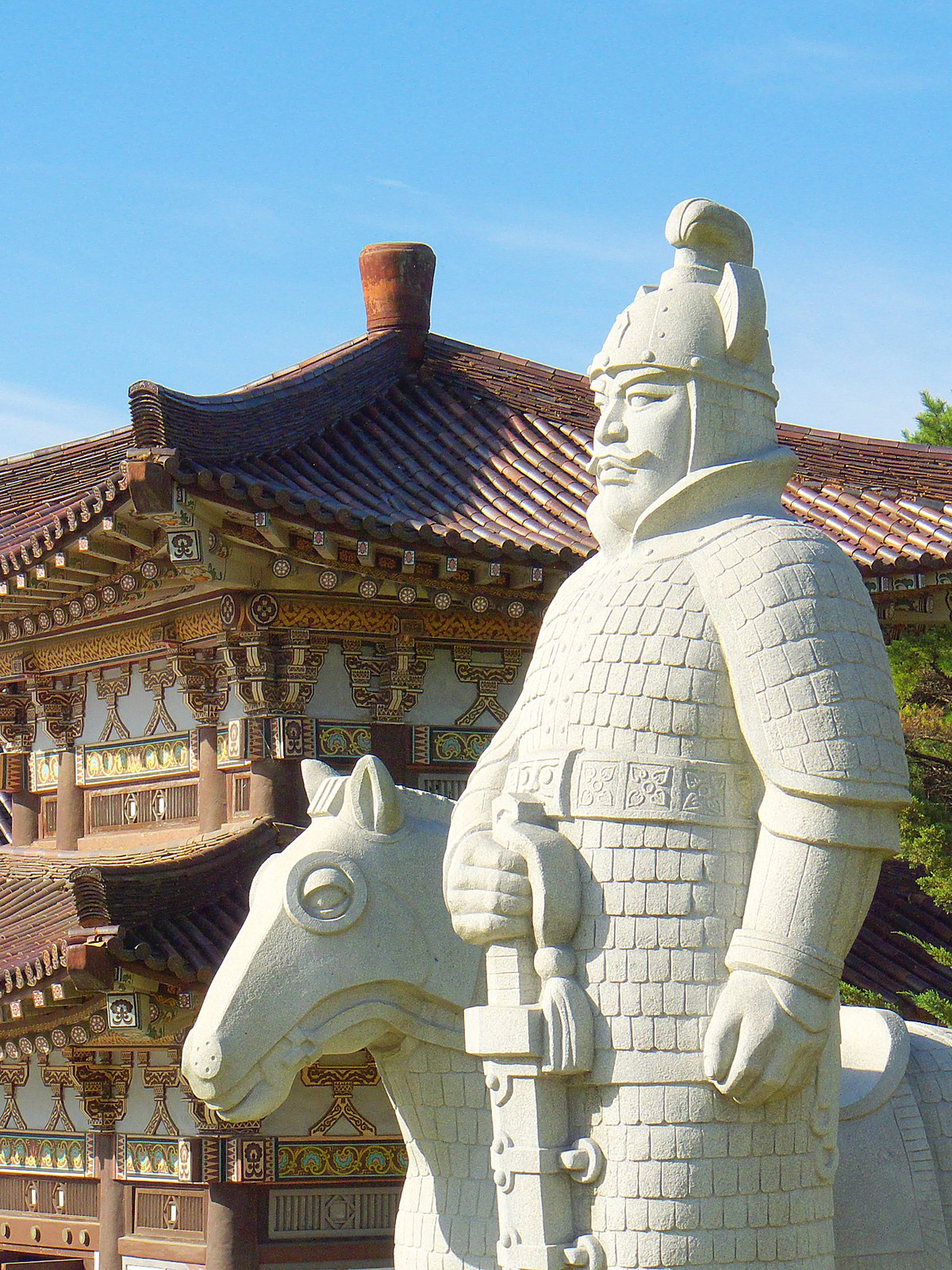
Origin of Goguryeo
Yalu RiverThe earliest record of Goguryeo can be traced from the geographic monographs of the Book of Han, the name Goguryeo is attested in the name of Gaogouli County (Goguryeo County), Xuantu Commandery since 113 BCE, the year when Emperor Wu of Han China conquered Gojoseon and established the Four Commanderies. Beckwith, however, argued that the record was incorrect. Instead, he suggested that the Guguryeo people were first located in or around Liaoxi (western Liaoning and parts of Inner Mongolia) and later migrated eastward, pointing to another account in the Book of Han. The early Goguryeo tribes were under the administration of Xuantu Commandery, and were perceived as dependable clients or allies by the Han. Goguryeo leaders were conferred Han rank and status, the most prominent being the Marquis of Goguryeo, which carried a relatively independent authority within Xuantu. Some historians attribute more power to the Goguryeo during this period, linking their insurgency to the collapse of the first Xuantu Commandery in 75 BCE.
In the Old Book of Tang (945), it is recorded that Emperor Taizong refers to Goguryeo's history as being some 900 years old. According to the 12th-century Samguk sagi and the 13th-century Samgungnyusa, a prince from the Buyeo kingdom named Jumong fled after a power struggle with other princes of the court and founded Goguryeo in 37 BCE in a region called Jolbon Buyeo, usually thought to be located in the middle Yalu and Tongjia River basin, overlapping the current China-North Korea border.
Chumo was the founding monarch of the kingdom of Goguryeo, and was worshipped as a god-King by people of Goguryeo. Chumo was originally a Buyeo slang for an excellent archer, which became his name later. He was commonly recorded as Jumong by various Chinese literatures including history books written by Northern Qi and Tang—the name became dominant in future writings including Samguk Sagi and Samguk Yusa.
